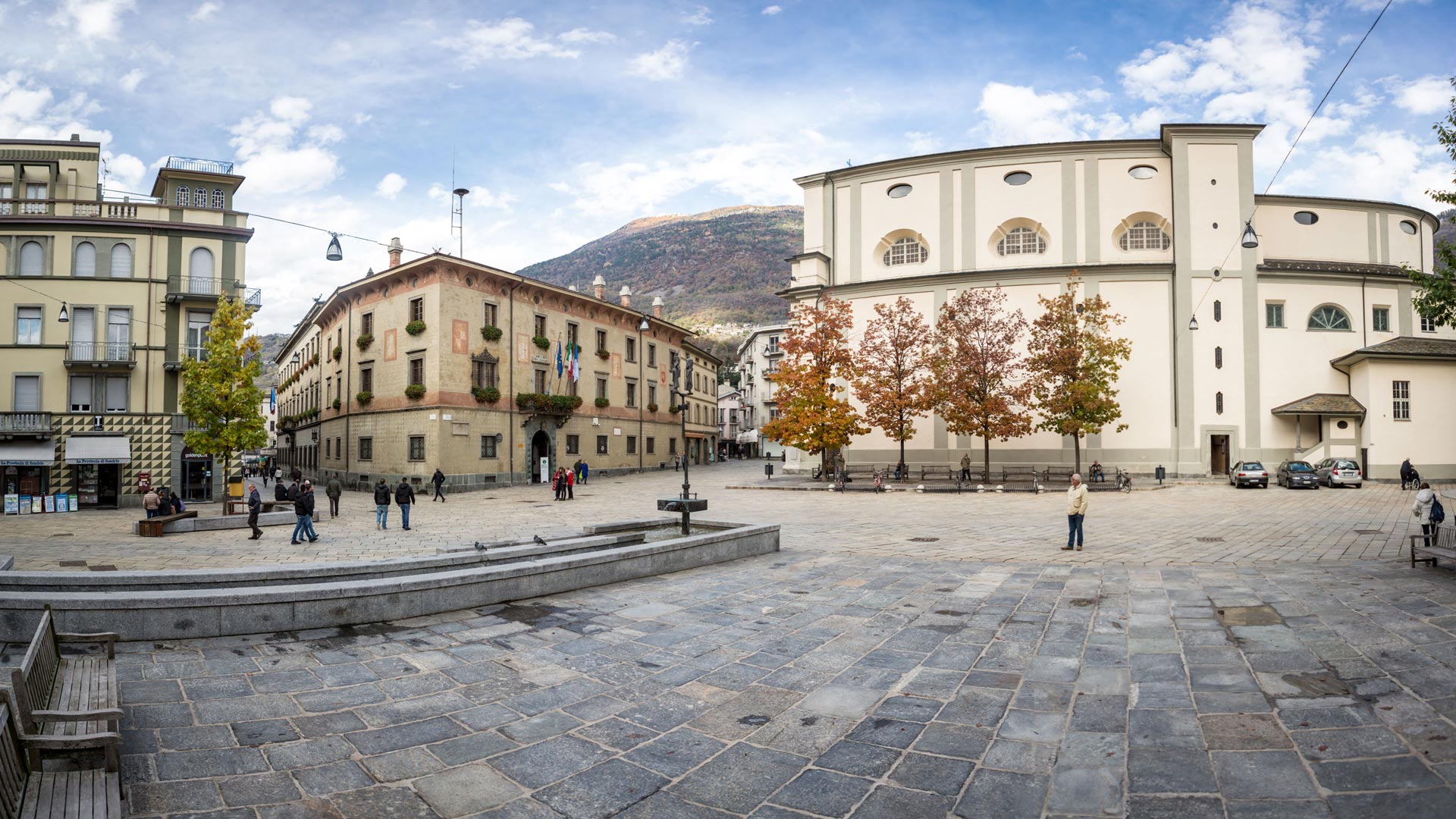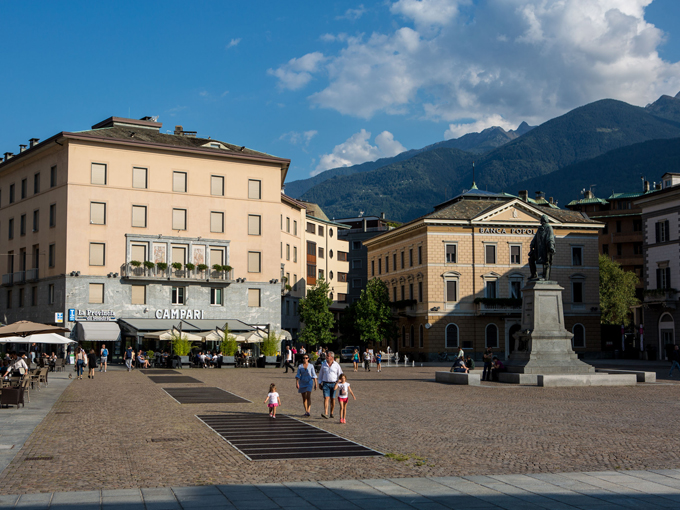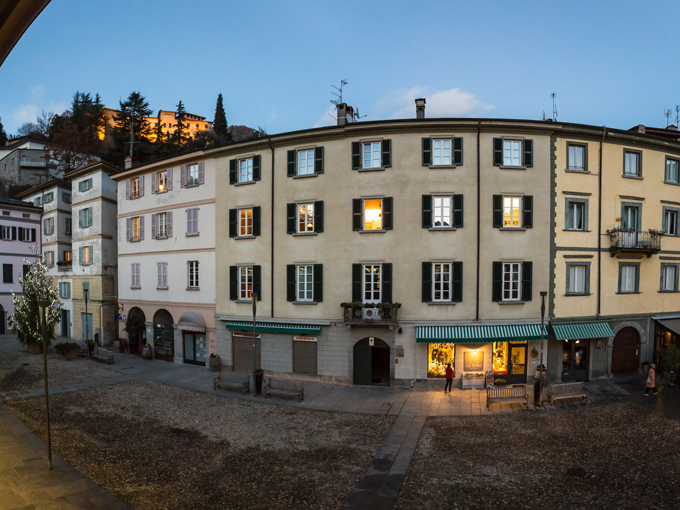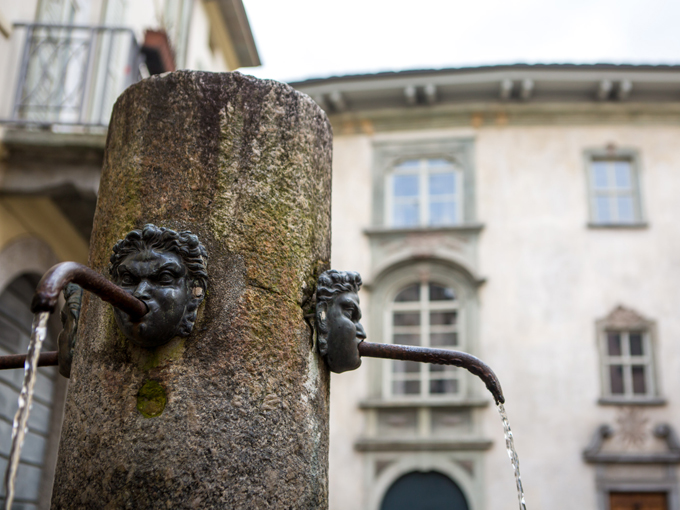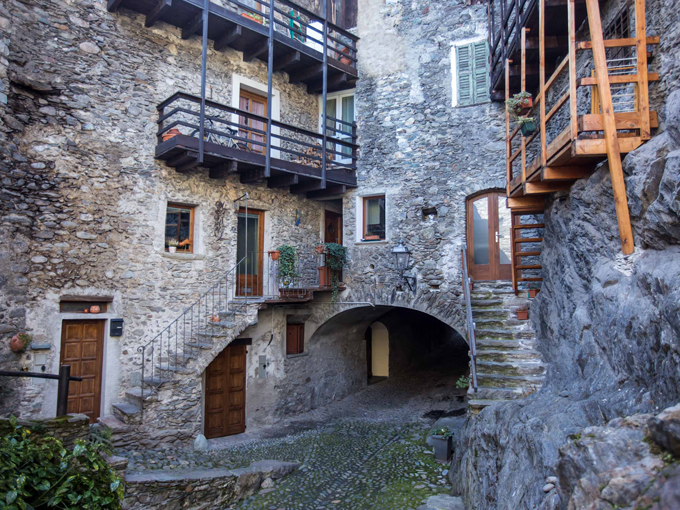Campello Square
Piazza Campello was the center of religious functions (the Collegiata and the other church buildings have unfortunately been destroyed) and the town’s political life (the municipal building was once the seat of the Governor of the Grisons). The piazza was named for the walled cemetery located at the side of the Collegiata, which served as the city’s main burial site until Napoleonic times.
The Collegiata of Saints Gervasio and Protasio, the city’s patron saints, is Sondrio’s main church and one of the oldest in Valtellina. Erected in the Middle Ages, it was modified many times and finally expanded in the early seventeen hundreds, erasing any remaining traces of the original structure. The current building displays a mixture of architectural styles, due to three distinct interventions; one involving the nave, in baroque style, designed by Pietro Ligari (1727-1739), another the presbytery, rebuilt according to neoclassical canons by Pietro Taglioretti (1797) and lastly the façade, redone by Giuseppe Sertoli in 1838.
Inside, there are several canvases and frescoes worthy of note, by Pietro Ligari, Antonio Caimi and Giovanni Gavazzeni, and six lateral altars also designed by Ligari. Even the building of the bell tower was a combined effort: the initial, ambitious design was Ligari’s (1733), but financial difficulties drove the community to a more modest realization. The tower was begun by a native of Canton Ticino, Giacomo Cometti, but finished by the architect Pietro Solari.
On the western side of the piazza stands Palazzo Pretorio, seat of the Grison government beginning in the mid fifteen hundreds and Sondrio’s City Hall since 1861. From 1915 to 1917, the building underwent a radical refurbishment, assuming its current aspect. The project was headed by an engineer from Como, Antonio Giussani, whose inspiration was drawn from the iconography of the local Renaissance palazzos. The piazza is also the site of two interesting and important contemporary sculptures: the “Colonna dell’Adda” [The Adda Column] (1962), by Mario Negri, and the “Monument to the Resistance” (1968), by Livio Benetti. The former, which stands in the fountain, consists of a decorated bronze base, on which the column rests, with two stylized figures atop it, while the latter, which stands in the planted area, features a monolithic base on which stands a group of figures in bronze: a patrol marching, followed by an allegorical figure of death.

